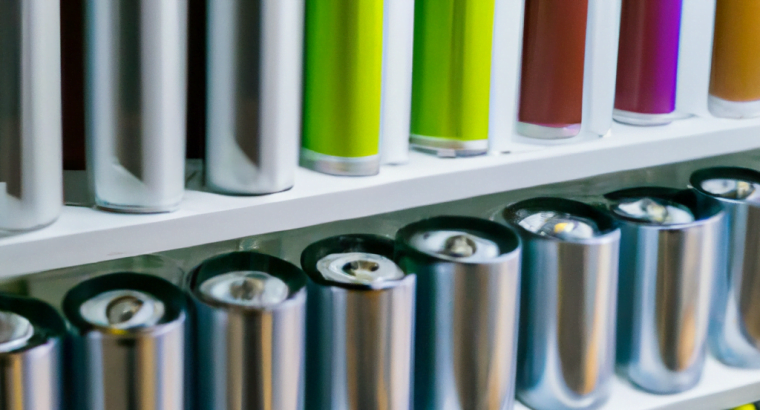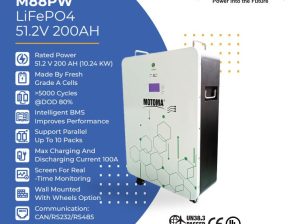Who makes battery energy storage systems?
- “Unlock the Power of the Future with Who’s Battery Energy Storage Systems!”
Table of Contents
- Introduction
- Evaluating the Impact of Battery Energy Storage Systems on the Environment
- Comparing Different Battery Energy Storage Systems and Their Uses
- An In-Depth Look at Who Makes Battery Energy Storage Systems
- The Future of Battery Energy Storage Systems: What to Expect
- Exploring the Benefits of Battery Energy Storage Systems for Renewable Energy
- Conclusion
Introduction
Battery energy storage systems are a crucial component in the modern energy landscape, providing the ability to store energy from renewable sources and other sources of electricity. These systems are designed and built by a variety of companies, ranging from small start-ups to large multinational firms. They typically come in two forms: stationary or mobile. Stationary systems are installed at a single site, while mobile systems can be transported to different sites. The companies that design and build these systems use a variety of technologies, such as lithium-ion batteries, lead-acid batteries, and flow batteries, to construct systems that can store energy from multiple sources. Companies also use software and other technologies to ensure that energy is stored and used efficiently. This introduction provides a brief overview of the companies that make battery energy storage systems.
Evaluating the Impact of Battery Energy Storage Systems on the Environment
The use of battery energy storage systems (BESS) has become increasingly popular in recent years, due to their potential to improve the efficiency and reliability of electrical grids. However, it is important to consider the potential environmental implications of these systems. This article will provide an overview of the environmental impacts of BESS and how they can be mitigated.
The use of BESS can reduce the need for backup generating plants, which can help to reduce emissions of greenhouse gases and other pollutants. By providing more efficient and reliable power, BESS can also reduce the need for new power plants, thus further reducing emissions. Additionally, BESS can help to reduce peak electricity demand, helping to reduce the amount of energy consumed overall.
However, BESS can also have a negative environmental impact. The manufacture and disposal of the batteries used in these systems can release toxic chemicals into the environment. In addition, the mining of the materials used in the production of batteries can have a negative impact, including the release of pollutants and the consumption of large amounts of energy.
The environmental impacts of BESS can be minimized by choosing renewable energy sources, such as solar and wind, to power the batteries. In addition, the use of recycled materials in the manufacture of batteries can help to reduce the amount of energy and resources used. The proper disposal of used batteries is also important, as improper disposal can lead to the release of hazardous materials into the environment.
Comparing Different Battery Energy Storage Systems and Their Uses
Battery energy storage systems have become increasingly important in recent years, as they provide an efficient and reliable way to store energy generated from renewable sources and use it when needed. This technology is being used in a variety of applications, ranging from residential homes to large-scale power plants. In this article, we will explore some of the different battery energy storage systems and their uses.
Lithium-Ion Batteries: Lithium-ion batteries are the most common type of battery energy storage system and are used in a variety of applications. These batteries are known for their high energy density and long cycle life, making them ideal for applications such as electric vehicles, solar energy storage, and grid energy storage.
Lead-Acid Batteries: Lead-acid batteries are the oldest and most widely used type of battery for energy storage. These batteries are able to provide a large amount of power and are relatively inexpensive to produce. They are most commonly used in residential solar systems, although they can also be used in larger-scale applications such as electric vehicles and grid energy storage.
Flow Batteries: Flow batteries are a relatively new type of battery and are beginning to be used in energy storage applications. These batteries use two electrolytes, one of which is stored in tanks and the other which is sent to the cell to generate power. This type of battery is often used in large-scale applications such as utility-scale energy storage and micro-grid energy storage
An In-Depth Look at Who Makes Battery Energy Storage Systems
Battery energy storage systems have become increasingly popular in recent years due to their ability to store energy for later use. As the demand for these systems grows, it is important to understand the different components and how they work together to create a successful system. In this article, we will take an in-depth look at who makes battery energy storage systems and how they are designed and manufactured.
The most important component of a battery energy storage system is the battery itself. Batteries are typically made from a variety of materials, including lead-acid, lithium-ion, and nickel-metal hydride. When selecting a battery, it is important to consider the type of energy being stored, the desired capacity, and the amount of energy needed to be stored.
The next component of a battery energy storage system is the inverter. An inverter is used to convert the energy stored in the battery into usable electricity. Inverters typically use either a direct current (DC) or alternating current (AC) system in order to produce the necessary electricity.
The third component of a battery energy storage system is the battery management system (BMS). This system helps to ensure that the energy in the battery is used efficiently and safely. The BMS monitors the state of charge of the battery, the temperature of the battery, and the voltage of the battery, among other things.
The fourth component of a battery energy storage system is the cable and wiring required to connect
The Future of Battery Energy Storage Systems: What to Expect
The future of battery energy storage systems is an area of intense interest and development, with many exciting and innovative advancements on the horizon. In the near future, we can expect battery energy storage systems to become more efficient, reliable, and cost-effective.
One of the most important developments in the future of battery energy storage systems is the advancement of lithium-ion technology. This technology has already been utilized in many consumer electronic devices such as laptops, cell phones and tablets, and has recently been applied to electric vehicles. In the future, this technology could be used in battery energy storage systems to increase efficiency and reduce costs. Li-ion batteries are also expected to become much lighter and more compact, allowing for a smaller footprint and easier installation.
Another exciting development in the area of battery energy storage systems is the emergence of solid-state batteries. These batteries are expected to be more reliable and efficient than their traditional counterparts, and could potentially be used in large-scale energy storage solutions. The technology is still in its early stages, but research and development is ongoing, and it is expected that these batteries will become more widely available in the near future.
Finally, the cost of battery energy storage systems is expected to decline over time. This is due in part to the increased efficiency of the batteries themselves, as well as the emergence of better manufacturing processes and cheaper materials. As the cost of energy storage systems decreases, it is likely that more consumers, businesses, and governments will
Exploring the Benefits of Battery Energy Storage Systems for Renewable Energy
Battery Energy Storage Systems (BESS) have become increasingly important in the development of renewable energy sources. As the world continues to shift towards low carbon sources of energy, BESS are an essential component of the transition. This article will discuss the various benefits of BESS and their role in the development of renewable energy solutions.
The first major benefit of BESS is the flexibility they provide. BESS can be used to store energy generated from renewable sources such as solar and wind, allowing it to be used when needed. This helps to ensure a consistent supply of energy and allows energy to be used more efficiently. Additionally, BESS can help to balance fluctuations in energy demand and supply, helping to reduce the need for additional generation capacity and reducing the cost of energy.
The second benefit of BESS is the improved reliability they provide. BESS can help to reduce the impact of grid outages, allowing energy to be stored and used when needed. This can help to reduce the cost of energy, as well as the cost of restoring power after an outage. Additionally, BESS can help to reduce emissions by allowing renewable energy sources to be used more efficiently.
Finally, BESS can help to reduce the cost of energy storage. BESS are often cheaper than other forms of energy storage, such as chemical batteries. This can help to reduce the cost of energy storage and make renewable energy sources more cost-effective.
In conclusion, BESS is an essential component
Conclusion
In conclusion, there are many companies that make battery energy storage systems, and each offers a unique set of features and benefits. Depending on the specific application and needs of the customer, a variety of companies can provide the right solution to meet their needs. Companies such as Tesla, LG Chem, Samsung, and Panasonic have all established themselves as leaders in the battery energy storage systems market.
Comments (1)
You must be logged in to post a comment.





[…] It would be best if you also were careful about using too much electricity, which can cause the batteries to overheat and damage the system. If you’re not careful, living off the grid with a solar powered home can be more trouble […]